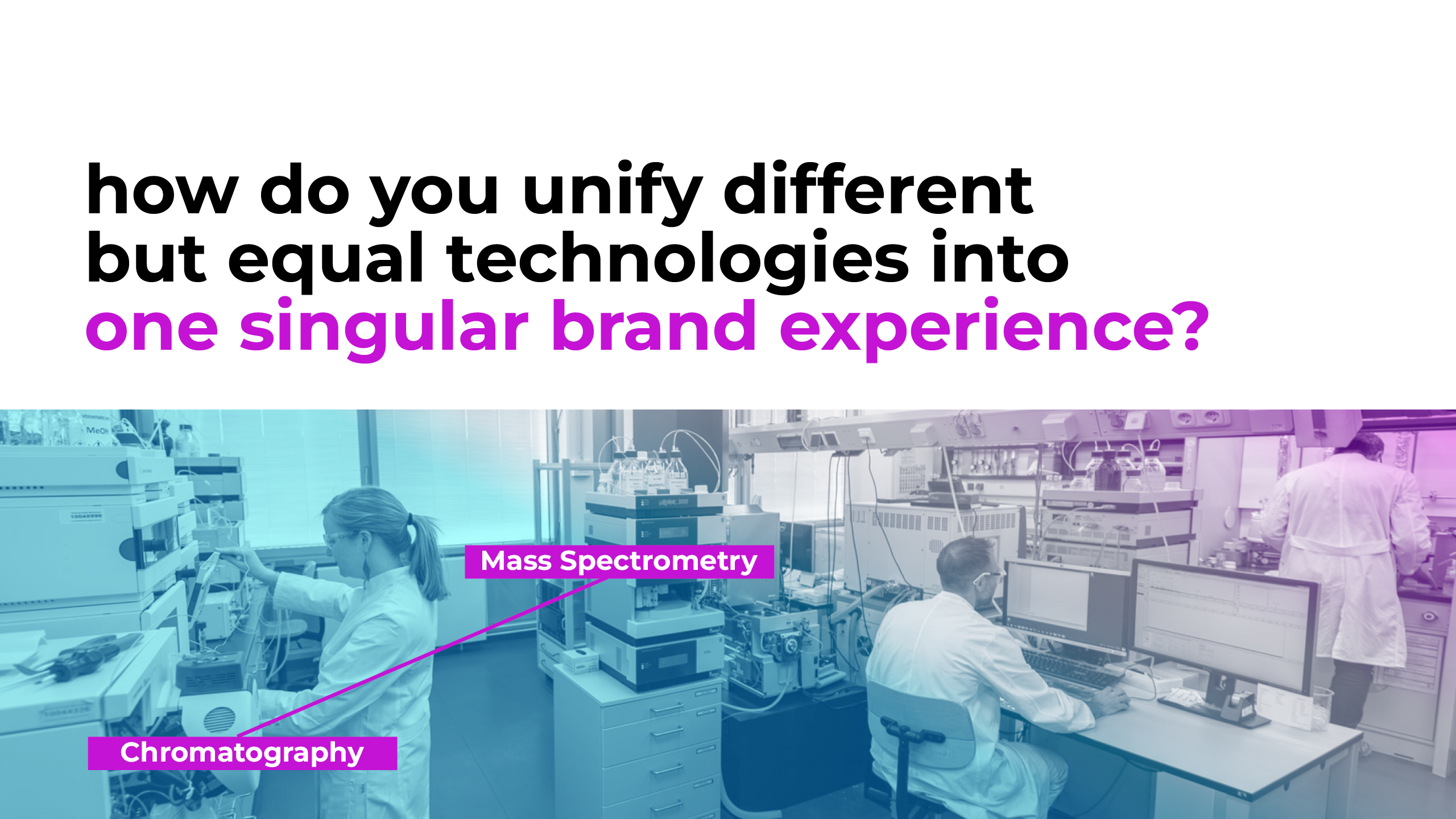THERMO FISHER SCIENTIFIC
How do you modularize scientific instruments for the modern laboratory?
In my role on the visual brand language project for Thermo Fisher Scientific’s mass spectrometry and chromatography system, my goal was to create a system that prioritized user experience while honoring the company’s scientific legacy. This involved incorporating multiple business units through cobranding efforts and designing modular components that maintained a consistent look and feel. To ensure a user-centered design, I conducted thorough user research, developed prototypes and 3D mockups, and created user personas. Additionally, rigorous user testing was conducted to gather valuable feedback and refine the system further. By focusing on these aspects, my aim was to deliver a visually engaging and intuitive system that met the needs of both users and the company’s brand image.
The design team was asked to develop a unifying visual language to bring together adjoining technologies into a singular brand
Our first task was to align six different business units – This was accomplished by hosting vision workshops with key stakeholders
MIRO enabled us to bring together the business units which were located in various locations in the USA and other countries
One of the key takeaways of the vision alignment workshops was to focus on User Experience to unit the brands
Armed with unified business units, we were able to call upon internal subject matter experts, external partners, and a network of scientists and technologists to better understand the technologies we were tasked with designing to
The collected data was quickly transformed into workflows, user pain points, and usability issues – Data was quickly visualized for analysis and review with our internal and external experts for verification
During the exploration phase, we started to envision concepts that addressed pain points such as digital connectivity, storage, drainage, resupply, and modularity
Based on the number of data points, modularity, and digital connectivity was the stand-out leaders in issues to design around
With preliminary concepts now vetted by internal teams, we began to wireframe and visualize 2D user experience concepts and 3D interactive prototypes
During a user test session in San Diego, CA we brought together a small band of external scientists and technologists to provide input on early stage concepts – the data collected during these sessions proved invaluable as we were able to cross check workflows and assumptions
Key takeaways from the test sessions were the desire for digital connectivity, e-commerce style supply replenishment, and digital connectivity during the era of COVID
Detailed view of slide open door feature to expose the modules and articulating door to present supplies and maintenance tools
Detailed view of easy-to-access consumables, sample loading drawer, and columns
Test subjects were delighted that their high tech instruments were about to adopt mainstream consumer product design details with a focus on usability and modernism
Preliminary personas were quickly refined based on test-subject interviews – In some cases assumptions were corrected, while in other cases validated
The test sessions proved fruitful to validate design direction and to quantify pain-points, needs, and desires






